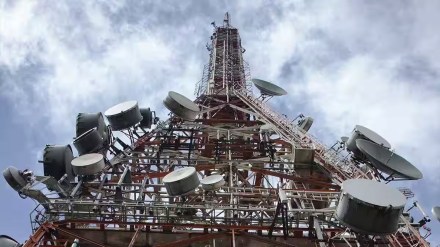The Union Cabinet last week approved spectrum auctions that will take place sometime later this year and has set the reserve price across multiple bands at around `96,000 crore. However, the government as well as the industry is not hopeful of a very robust response. Basically, the spectrum, which will be put up for auctions, is what remained unsold in July 2022. For Bharti Airtel and Vodafone Idea, the 20-year lease period for certain bands is coming to an end, so they need to renew them. Against a reserve price of `96,000 crore, all the government may be able to get is around `10,000-12,000 crore.
The reason for such a tepid response is that the operators bought spectrum worth `1.5 trillion in auctions held in July 2022, the bulk of which was for 5G services. It’s been more than a year since 5G services were launched by Bharti and Reliance Jio but monetisation is nowhere on the horizon. Furthermore, operators have enough spectrum, so there’s no rush to buy and store.
Spectrum anyway has ceased to be an issue for the telecom sector. Tariffs are a real concern, especially if there’s no scope to monetise 5G services. Bharti Airtel’s managing director Gopal Vittal said that going forward the improvement in average revenue per user will be through tariff repair or tariff hikes rather than monetising 5G services. In an interview to this paper, he said 4G and 5G are just better, more efficient ways of delivering the same outcome, so there’s no possibility of charging differential rates for them.
If operators can’t charge a premium for 5G and are fully aware that Arpu improvement can happen only through tariff repair, why are they not hiking the same? The answer lies in the competitive nature of the sector. There are three players, but the real competition is between Bharti and Jio. Currently Bharti’s tariffs are at a premium to Jio’s and any first move on tariff hike made by Bharti would widen the gap whereby it risks losing users. Jio being the largest operator in terms of user base, generally remains wary of tariff hikes. However, with its Arpu remaining flat sequentially at `181 in the October-December quarter, it now does not have much of an option.
Bharti’s Arpu at `208 is now above its target of `200, but as Vittal said, the company wants to reach `300, for which only organic tariff readjustments will not do. Both Jio and Bharti have so far, been achieving Arpu growth through a mix of tariff adjustments and subscriber growth—Bharti by hiking entry level tariffs for 2G users, and Jio by launching JioPhone so that 2G users from other networks move to its 4G network. However, both seem to have reached a saturation point now and need to look at headline tariff hikes. In the past, operators have hiked headline tariffs together, but that was after the government nudged them to do so—the last major hike was undertaken in 2021. Analysts say that a hike in the range of 20% may take place after the general elections. Telecom tariffs are very low in the country and a rise is not likely to be an issue before the elections. Operators should not be in a wait-and-watch mode as an early decision on tariff repair will be beneficial for all.
